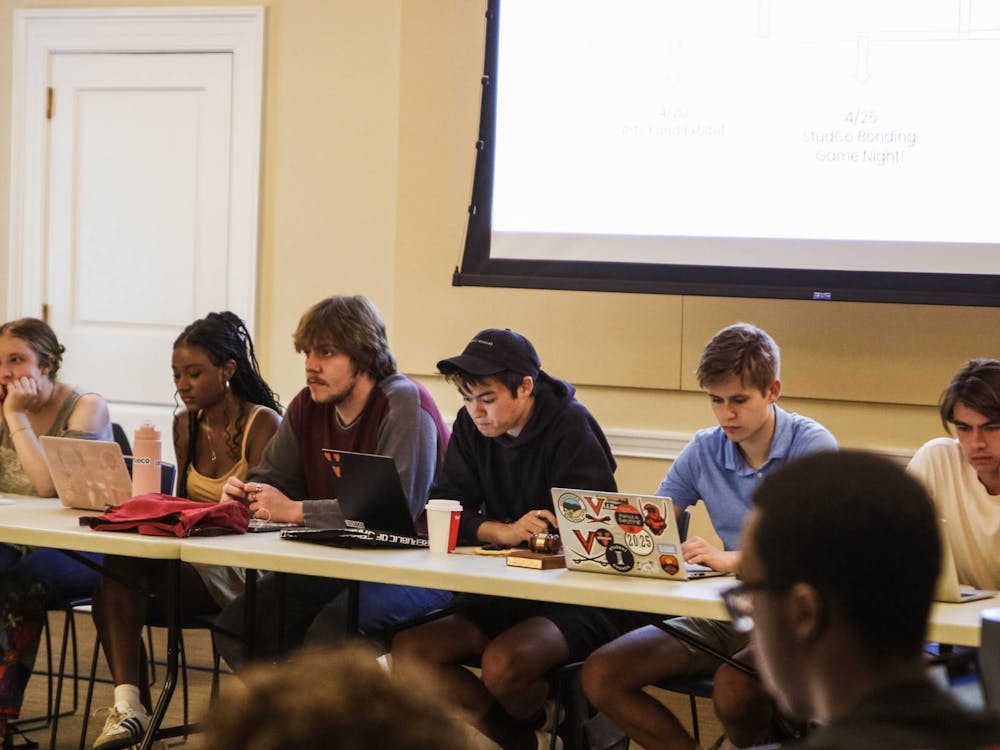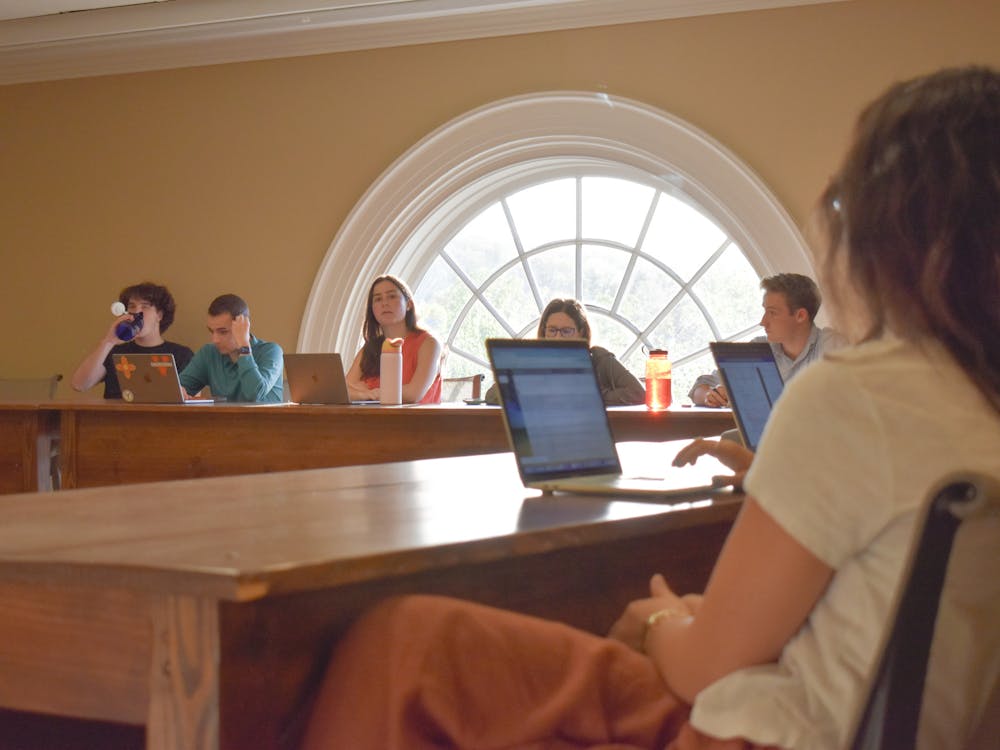In fall 2010, the Gooch-Dillard residence area had a problem: the UTS bus schedule was a mess. One frustrated student posted his concerns on SpeakUpUVA.com, a website run by Student Council that lists student-generated proposals to change University policies, and sent his proposed solution around on the Gooch-Dillard listserv to encourage people to vote for his idea. As the idea quickly became the top post on the website for that month, UTS subsequently implemented a new, more efficient bus schedule for the Gooch-Dillard area.
That student was fourth-year College student Eric McDaniel, the outgoing president of Student Council.
Student self-governance is a storied University ideal that is traditionally traced back Thomas Jefferson’s goal to educate an effective citizenry. For today’s administrators, faculty and students at the University, it is an integral part of daily life.
Patricia Lampkin, vice president and chief student affairs officer, said that navigating student self-governance is as much a part of the University as academics.
“Students are here to gain an education, and what occurs outside the classroom can be equally as important as what is learned inside the classroom,” Lampkin said.
Incoming Student Council President Jalen Ross, a third-year Engineering student, described student organizations in college as an effective bridge between the dependence of high school and the complete independence of the post-graduate working world.
“The best possible way to make that transition is to have [a] system where you are allowed to fail, to make mistakes,” Ross said.
Lampkin echoed the benefits of giving students the possibility both to succeed and fail.
“If [students] don’t make good choices, which sometimes they don’t, I know that those poor choices and mistakes can be powerful learning experiences that lead to fuller character development and a clarification of personal values,” Lampkin said.
Statistics on voter participation in recent university-wide elections may belie this image of student interest in the system. According to the University Board of Elections, itself a student-run organization, spring 2014 elections for the major student government positions brought shockingly low participation rates, with 16.26 to 24.77 percent of eligible voter turnout. By contrast, the voter turnout for the 2012 national presidential election was 61.8 percent according to the U.S. Census Bureau.
Ross says low voter turnout is a warning sign for future problems within student-self governance.
“That number is too low,” Ross said, “When national elections are doing better than [we] are … then that’s symptomatic of a problem.”
“That number is too low. When national
elections are doing better than [we] are…
then that’s symptomatic of a problem.”
Krishna Korupolu, University Board of Elections chair and second-year Commerce student, said past data supports this ongoing problem.
“Overall, there has been a decline in voter turnout in recent years,” Korupolu said in an email, citing a “lack of competitive elections” as the reason for this decline.
Ross won one of several uncontested races this year. Others included Student Council vice president for organizations, the Second Year Council president, Second Year Council vice-president, Fourth Year president, every College Council position, among many others.
Korupolu said UBE has considered installing new polling stations and promoting events to encourage voting in future elections. Both Korupolu and Ross said student awareness is the real problem — organizations need to take it upon themselves to advertise available positions.
Still, they agreed concern about low voter turnout and uncontested elections may be excessive.
“[It’s] facile to look at student self-governance as election [participation],” McDaniel said. “[It] is a really one-dimensional and sort of platitudinous way to think about what it means to be a student leader at the University.”
McDaniel pointed to the growth of smaller student groups at the University as a testament to the health of student self-governance. There are more than 700 active student organizations on Grounds, which translates to an active and independent organization for approximately every 20 undergraduate students.
“CIOs are some of the best examples of pure student self-
governance.”
“[Contracted independent organizations] are some of the best examples of pure student self-governance,” Ross said. “A vast majority don’t involve [administration].”
Ross also said that even the process by which CIOs are created and obtain funding — through Student Council — is completely student run.
Support for student self-governance also runs deep in administrative offices.
“Students are the lifeblood of the University, and I look to support them and advocate for them in every way possible,” Lampkin said.
Lampkin encapsulates the conflicting demands of a University administrator: balancing the demands of the cherished tradition of student self-governance with the need for administrative oversight.
Lampkin serves as a “guide or advisor” for Honor and UJC decisions, with even the power to demand a review or retrial of a UJC case, but in neither case is she able to directly “reverse or modify a decision.”
“I have rarely exercised these review options,” Lampkin said. “I have found that the Honor and Judiciary Committees understand their huge responsibilities and make fair and well-thought-out decisions.”
“I have rarely exercised these review options.
I have found that the Honor and Judiciary Committees
understand their huge responsibilities and make
fair and well-thought-out decisions.”
Ross said student self-governance must be vigilantly guarded.
“If we are not careful … there are ways it can slip away from us,” he said. “There are things at the end of the day that we don’t have the expertise to run, [but] it is very easy for an administrator to say … this issue is too important to leave to student self-governance.”
McDaniel again pointed to the large presence of smaller-scale student organizations as an important part of the evolution of student self-governance. He cited recent grassroots opposition to AccessUVa cuts as an example of the vitality of student governance.
“Students rallied behind the program… and
said that financial access and equity are very
important vales for students at U.Va.”
“Students rallied behind the program … and said that financial access and equity… are very important values for students at U.Va.,” McDaniel said.
Because of fervent protests and campaigns, AccessUVa became of the University’s top three funding goals, attracting funds from a major donor.
“[The future of student self-governance is] fundamentally pluralistic … no longer [dominated] by these big three organizations [Honor, UJC, and Student Council],” McDaniel said. “If you care about something … you will be listened to.”
Krishna Korupolu is a Cavalier Daily sports writer. He did not participate in the writing or editing of this article




